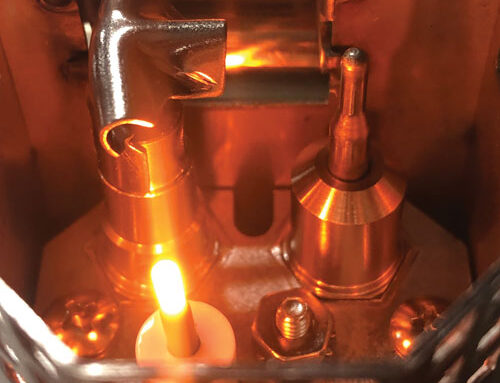HPC Fire Inspired is recognized as a leader in the outdoor fire feature industry. Since 1975, HPC has been dedicated to providing trusted fire designs that stand the test of time. Over time, our designs have evolved offering consumers the latest technology and modern conveniences. As HPC progresses, our team never loses sight of the importance of sharing industry knowledge. HPC believes that knowledge is power and our team is dedicated to empowering consumers with information allowing them to better discern their needs.
In this Tech Talk, HPC would like to help consumers understand what lies beneath their fire designs by reviewing common gas piping material as well as important factors to take into consideration when preparing for installation.

Influencing Factors
There are several types of materials commonly used for underground gas piping, each with its own advantages and disadvantages. The choice of material depends on factors such as local building codes, soil conditions, and the specific requirements of the gas distribution system. We will review of the most common types of gas piping used for underground installations as well as identify important factors to consider with each material.
Steel Piping (stainless, black iron, galvanized)
They are often coated with fusion-bonded epoxy for added protection against corrosion. Types of steel can vary from stainless steel to galvanized pipe. It’s important to note that any type of galvanized or black iron being placed underground must have some form of bonded coating to prevent corrosion in an underground application. It is important to take into consideration use of Steel pipes may require more labor-intensive installation methods when compared to alternative materials. Methods such as cutting and threading custom lengths to assembling fittings may take more time, but when done properly offer durability and reliability.
Corrugated Stainless Steel Piping (CSST)
Corrugated Stainless Steel Tubing (CSST) is a flexible, stainless-steel pipe used to supply natural gas or propane in residential and commercial structures. CSST is often coated with a yellow, or in some cases, a black exterior plastic coating. Although CSST is stainless steel the coating adds a layer of corrosion protection from elements underground. One major benefit of using CSST is that it is flexible and can be installed in long one-piece sections allowing for easier and quick installation. In addition CSST gas piping systems have less joints and therefore pose less potential for leaks. Using CSST, may require additional protection in rocky or abrasive soils. It is imperative that CSST be properly bonded and grounded to mitigate risks for electrical issues, such as lighting strikes.
Polyethylene (PE) Pipe
Gaining popularity over the last decade, Polyethylene boasts unique material characteristics compared to traditional materials. PE pipe is highly flexible, robust, and easy to install like the CSST. PE piping is an environmentally friendly choice and is 100% recyclable. PE fittings and joints are typically joined using heat fusion or mechanical fittings, reducing the risk of leaks and reducing installation time. However, added care must be taken when installing PE pipes underground. This material can be more susceptible to damage from punctures in rocky or abrasive soils. Therefore, prepping the installation soil by lining it with pea gravel will protect the pip from being damaged.
Copper Tubing
Copper is durable and has a long lifespan. It is resistant to corrosion and is suitable for most underground applications. Although not as popular as it once was, copper is flexible and easy to install. On the other hand, utilizing Copper can be expensive, and its cost fluctuates with market conditions. Some municipalities no longer allow copper piping, so it is important to confirm local codes before considering copper tubing for gas lines. While Copper is durable, when used to deliver gas the additives create wear and tear on the tubing. This will eventually result in a system failure causing a gas leak. For this reason, copper tubing will no longer meet code in some areas.
Key Takeaways
These are the most popular types of material used for gas lines. When selecting the type of gas piping for an underground installation, it’s crucial to consult local building codes and regulations. The choice of material should also consider factors such as soil composition, depth of burial, and the specific requirements of the gas distribution system.
Proper installation, corrosion protection, and safety measures are paramount for any underground gas piping system. Regular inspections and maintenance ensure the safety of the infrastructure and the surrounding environment.
In conclusion, underground gas piping plays a crucial role in delivering gas to homes, businesses, and industries. The choice of piping material should be based on careful consideration of the unique characteristics and requirements of each project. By selecting the appropriate material and following industry best practices, gas distribution systems can operate safely and efficiently for years to come.
If you have any questions or concerns, please give us a call at
937-436-9800. Let our NFI certified technicians provide guidance around all your fire design needs.
Looking to learn more about HPC’s Offerings? Schedule an online or in person training with Chuck Parsons, HPC’s training and education manager.





